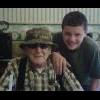-
Recently Browsing 0 members
No registered users viewing this page.
-
-
Recent Topics
-
- 20 comments
- 422 views
-
- 400 comments
- 34,436 views
-
- 3 comments
- 144 views
-
- 4 comments
- 264 views
-
- 2 comments
- 789 views
-
- 5 comments
- 1,662 views
-
-
-
Recent YouTube Posts





